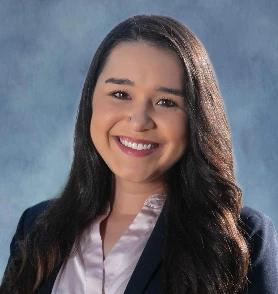3394 - Non-Surgical Management of Rectal Adenocarcinoma in a Safety-Net Hospital System: Outcomes and Implications for Watch and Wait Strategies
Presenter(s)

A. N. Chavana1, P. Pathak2, C. Stewart2, L. Garcia3, A. Echeverria2, and A. N. Hanania2; 1Baylor College of Medicine, Houston, TX, 2Department of Radiation Oncology, Dan L. Duncan Comprehensive Cancer Center, Baylor College of Medicine, Houston, TX, 3Boston University, Boston, MA
Purpose/Objective(s): Clinical guidelines now incorporate watch & wait (W&W) for an organ-preservation approach in patients with locally advanced rectal cancer (LARC). As a safety-net hospital system, the patients we serve do not reflect those treated on clinical trials. Our goal was to identify in an under-served population: 1) the efficacy of radiation (RT) in maintaining primary local control (LC) and 2) the incidence of toxicities.
Materials/Methods: This retrospective study included patients with rectal adenocarcinoma treated non-operatively with long-course chemo-RT (LCRT) or short-course RT (SCRT) in addition to chemotherapy, at a single institution between 2012-2023. Patients were excluded if they were treated with palliative intent or if post-RT imaging was not available. Demographic, clinical, and treatment/toxicity data were abstracted from electronic medical records.
Results: We identified 49 cases, with a median follow-up of 25 months (range: 8-90). Of these, 55% were male, 63% Hispanic, 20% White, and 12% Black. Most patients (69%) were uninsured and treated on a county-based financial assistance plan, 12% had Medicare, 12% had exchange-based insurance, and 6% had employer-sponsored insurance. The median age at diagnosis was 57 years (range: 23-85) and most (82%) had AJCC Stage III or higher disease. One patient had a history of inflammatory bowel disease. Reasons for non-operative management included: patient preference (n=24, 49%), presence of low-burden metastatic disease/non-regional lymph node involvement (n=17, 35%), and medical co-morbidities (n=8, 16%). Twelve patients (24%) received SCRT with 25 Gy administered in 5 fractions. The median dose for LCRT regimens was 50.4 Gy (IQR: 50-55). There was no statistically significant difference in local failure between SCRT and LCRT (p=0.51). At two years the LC, progression free survival, and overall survival were 59%, 43%, and 67%, respectively. Ten patients (20%) had no evidence of disease at their last appointment. Five patients (10%) required an ostomy after definitive RT. Four patients experienced a grade =3 treatment-related toxicity including fistula development (n=2), rectal stricture (n=2), and gluteal abscess (n=1).
Conclusion: Our work suggests RT can reasonably maintain LC in LARC for non-surgical patients with limited secondary toxicity. Our findings have implications that should help alleviate concerns for patients in lower-resource settings who may be unable to strictly adhere to W&W surveillance protocols.
